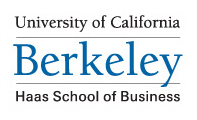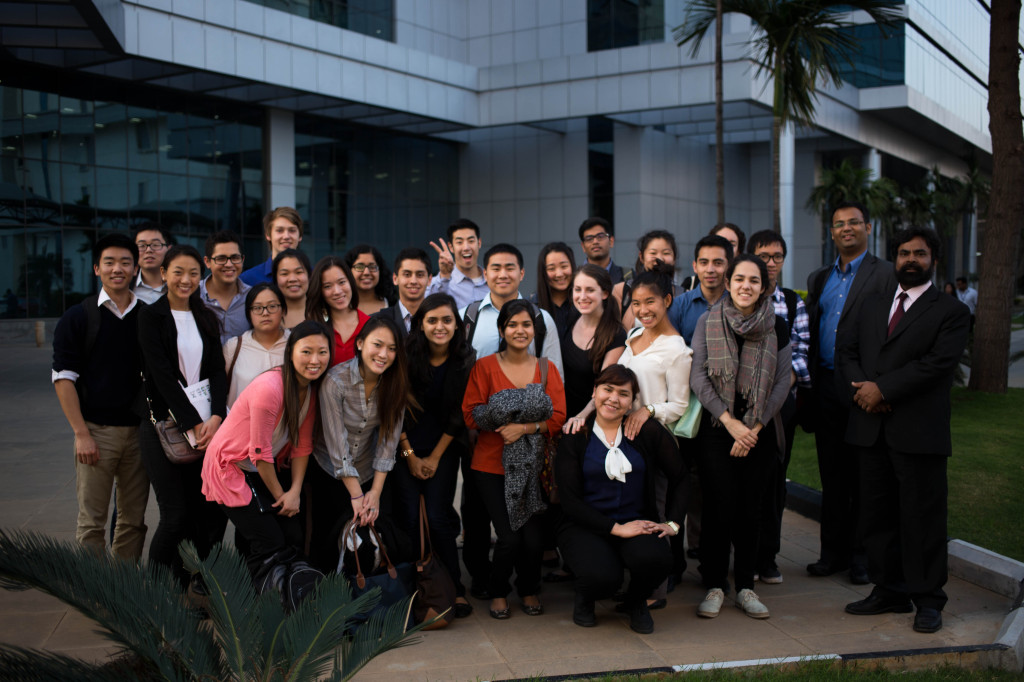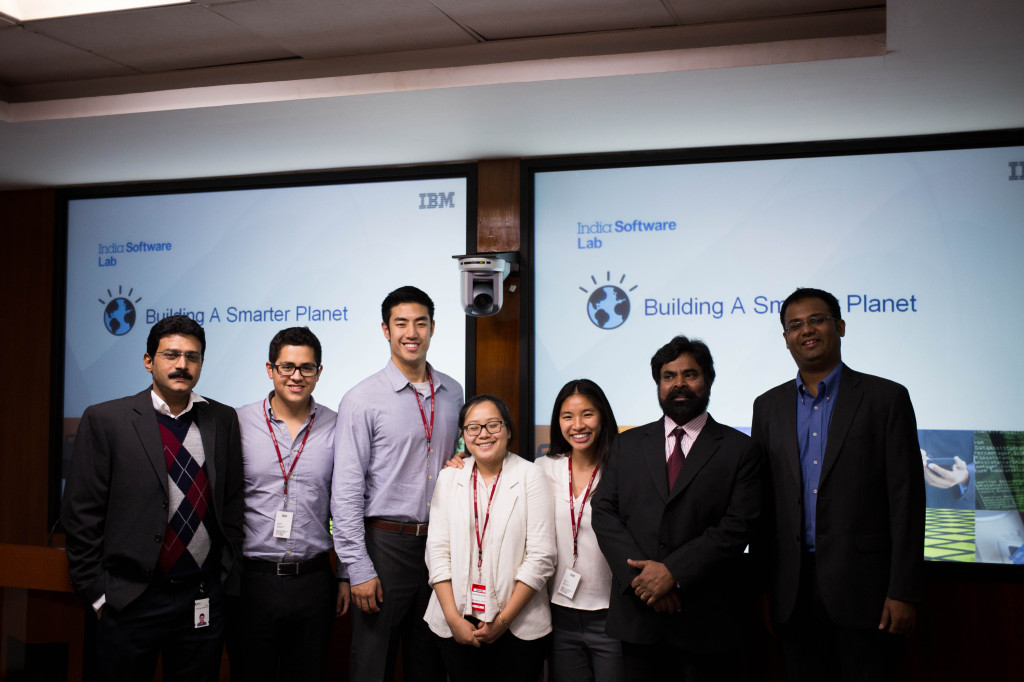The students visited the largest research and development center outside the United States today in Banglore: GE’s innovation center with over 6000 scientists and research spanning seven main sectors, including energy, healthcare, aviation, transportation, capital, home and business solutions, and media. With a history of innovation and growth through partnerships, GE is now focusing on infrastructure and healthcare in India.
$6 million is allocated to healthcare to provide equipment and services at a lower cost, higher quality, and providing greater access-these three points are what GE is committed to achieving through their research and development.
What GE has found is something they’ve coined “pseudo-care”, where midwives and other nurses or medical practitioners can give a patient some care but are unable to use the type of equipment GE has provided them with because the machines aren’t intuitive enough for them to understand (technological advancement has surpassed what the human has been educated with so GE wants to make their interfaces easier to use-open innovation/design aspect comes in here)
They emphasized designing for their market, which in India is low cost and high durability, very different from the western world-for example, how does an x-Ray machine that runs 24/7 operate in places where there are power outages every few hours? How do you design a product that operates even in these conditions and manufacture it for half as much? GE emphasized that it wants to create a whole new market pie, rather than just increasing their share of the market.
One interesting example GE gave is that of East Meets West, an organization based out of Massachusetts that worked to connect GE’s equipment with their own distribution network in Vietnam to reach more end users. The distributive network in India is a key challenge to providing quality healthcare.
After touring GE and seeing some of its product lines, the students realized how similar many of its products were to those of Philips. While the two are competitors on the healthcare front, they couldn’t help but wonder if there was a way to increase collaboration between the two corporate giants.
After lunch, the students then visited IBM, and listened to a few lectures regarding IBM’s Watson machine and challenge involving education. IBM wants to solve the challenge of providing access and quality education to more people that is also relevant to their own business. Some of IBM’s own projects included traffic-prediction analysis in Singapore, which tracked the density of cell phone signals to determine the amount of traffic in a given area of the city. They have created an “integrated smart city” program that tracks and monitors the infrastructure, healthcare, health and wellness, and many more aspects of a city using IBM’s technology.
The IBM challenge was followed by a tour of the facilities, including observing the data center and it’s new and improved cooling cabinet system. This concluded the corporate visits of this trip, so the students are really excited to begin thinking about their semester long projects. Returning to their hotel, the students went straight to work on their business plan presentations to IDIOM and various executives in Bangalore the next day-their six ideas were focused on helping the second tier city of Tumkur and are excited to present tomorrow.




